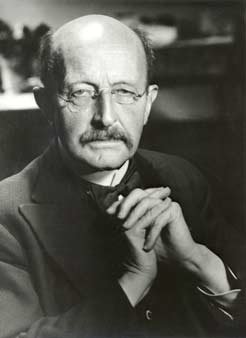Statement of the second law of thermodynamics
The first law of
thermodynamics is a statement of the principle of conservation of heat energy.
The second law deals with the condition and possibility of those energy
transformations. The second of thermodynamics has been stated by different
scientists in different ways. Of all the statements, the one due to Clausius is
the most convenient for general use.
 |
| Rudolf J. E. Clausius |
(1)
Negative stand point (Clausius): “It is impossible for a self-acting machine, unaided
by any external agency, to convey heat from one body to another at a higher
temperature.”
That
is to say, heat will not pass spontaneously from a cold body to a warmer one.
In order to make it do so it is necessary to do external work of some sort. In
the case of a refrigerator (ammonia ice plant), heat is absorbed from the brine
solution at a lower temperature and rejected into water at a higher
temperature. This does not happen of its own accord. An external agency (the
pump) has to do work in order to achieve this.
(2)
Positive stand point (Edser): “Heat flows of itself from higher to lower
temperature.”
 |
| Lord Kelvin (1824-1907) |
(3)
Lord Kelvin stated
the law in the form “It is impossible, by means of inanimate material agency to
drive mechanical effect from any portion of matter by cooling it below the
temperature of the coolest body of its surroundings.”
This
can be readily understood from the fact that a heat engine cannot work already
when the temperature of the source and sink are equalized and much more so when
the source cools down to a temperature lower than that of the coldest body in
the surroundings.
 |
| Max Planck (1858-1947) German scientist |
(4)
Planck
stated the law in the form “It is impossible to construct an engine which will
work in a complete cycle and produce no effect expects the raising of a weight and
the cooling of a heat reservoir.”
(5)
Kelvin and Plank stated the law as follows: “It is impossible to construct an engine
which operating in a cycle will produce no effect other than extraction of heat
from a reservoir and performance of an equivalent amount of work.”
 |
| James Clerk Maxwell (1831–1879) |
(6)
Maxwell
stated the law as follows: “It is impossible to produce any difference in
temperature and pressure in any isolated mass originally at uniform temperature
and pressure and pressure without some expenditure of energy.”
Arguments
can be advanced to show that these various statements of the second law are
essentially equivalent to one another.
It
is not possible to prove the law by the experimental verification of a great
number of predictions based upon it.
The
law explains our failure to utilize the immense quantity of heat energy in our
surroundings. For example, we cannot run an engine on the heat content of the
oceans because we have no large sink at a lower temperature into which the
engine could discharge heat.
It
is possible to deduce from the second law of thermodynamics that the reversible
engine is the most efficient and that its efficiency depends on the operating
temperatures and not on the substance used.
To
be more fruitful in application the second law may be stated in precise
mathematical way. This requires the introduction of a law new physical quantity
called entropy.
Impossibility of perpetual
motion machine of the second kind
A cyclic device which would
continuously abstract heat from a single reservoir and convert the heat
completely to mechanical work is called a
perpetual motion machine of the second kind. Such a machine would not
violate the first law (the principle of conservation of energy) since it would
not create energy but economically it would be just as valuable as if it did
so, because of the existence of heat reservoirs such as the oceans or the
earth’s atmosphere from which heat could be abstracted continuously at no cost.
Hence the second law is sometimes stated, “A perpetual motion machine of the second
kind is impossible.”
Carnot’s theorem
Assuming the truth of the
second law of thermodynamics, we may deduce two important results which are
usually taken together to constitute Carnot’s
theorem.
(a) Working
between the same initial and final temperature, no engine can be more efficient
than a reversible engine.
(b) The
efficiency of all reversible engines working between the same limits of
temperature is the same.
Entropy
One of the objects of the
second law of thermodynamics is to predict the direction in which a thermal
process will take place. This is best done by introducing some physical
quantity which would be a function of thermodynamic coordinates and which would
serve the purpose for determination of the direction of occurrence of a thermal
process. In mechanics and in electricity we define the quantities potential and
potential energy, for determining the direction of occurrence of an event. In
these cases a mass or a charge – as the case may be – moves in such a direction
that its potential energy approaches a minimum. In thermodynamical processes
we must search for a quantity which tells us about the direction of flow of
heat and which could efficiently define the thermodynamical state of any
working substance. The required quantity was supplied by Clausius who called it
entropy which we denote by the symbol
S.
Statement of the second law of thermodynamics in
terms of entropy
The statement of the second
law of thermodynamics in terms of entropy is in a way, a restatement of the
principle of increase of entropy. The law of Clausius may be stated as follows:
“Every physical or chemical
process in nature takes place in such a way that the sum of the entropies of
all bodies taking part in the process increases. In the limiting case of a
reversible process the sum of the entropies remains constant.”


No comments:
Post a Comment